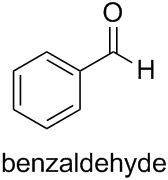All aldehydes are supposed to respond to Fehling's test. So why doesn't benzaldehyde respond to it?
Does it have something to do with the fact that benzaldehyde is an aromatic compound? If so, then how?
All aldehydes are supposed to respond to Fehling's test. So why doesn't benzaldehyde respond to it?
Does it have something to do with the fact that benzaldehyde is an aromatic compound? If so, then how?
The rate-limiting step of the Fehling’s test reaction with aldehydes is the formation of the corresponding enolate:

The subsequent reaction of the enolate with copper(II) proceeds through a single electron transfer mechanism.
Aldehydes that lack alpha hydrogens, such as benzaldehyde or pivalaldehyde (2,2-dimethylpropanal) cannot form an enolate and thus do not give a positive Fehling’s test result under usual conditions.


In benzaldehyde, the carbonyl group is an electron withdrawing group so the carbonyl group pulls the electron from the electron-rich benzene ring. Due to this, the polarity of the $\ce{C-H}$ bond in the carbonyl group is reduced because the $\ce{C-H}$ bond now has a higher electron density. Thus, the $\ce{C-H}$ bond becomes stronger (the lesser the polarity of a bond, the stronger the bond ). So Fehling's solution (comparatively a weaker oxidizing agent than Tollen's reagent) can't oxidize benzaldehyde (an aromatic aldehyde). However, Fehling's solution can oxidize an aliphatic aldehyde.